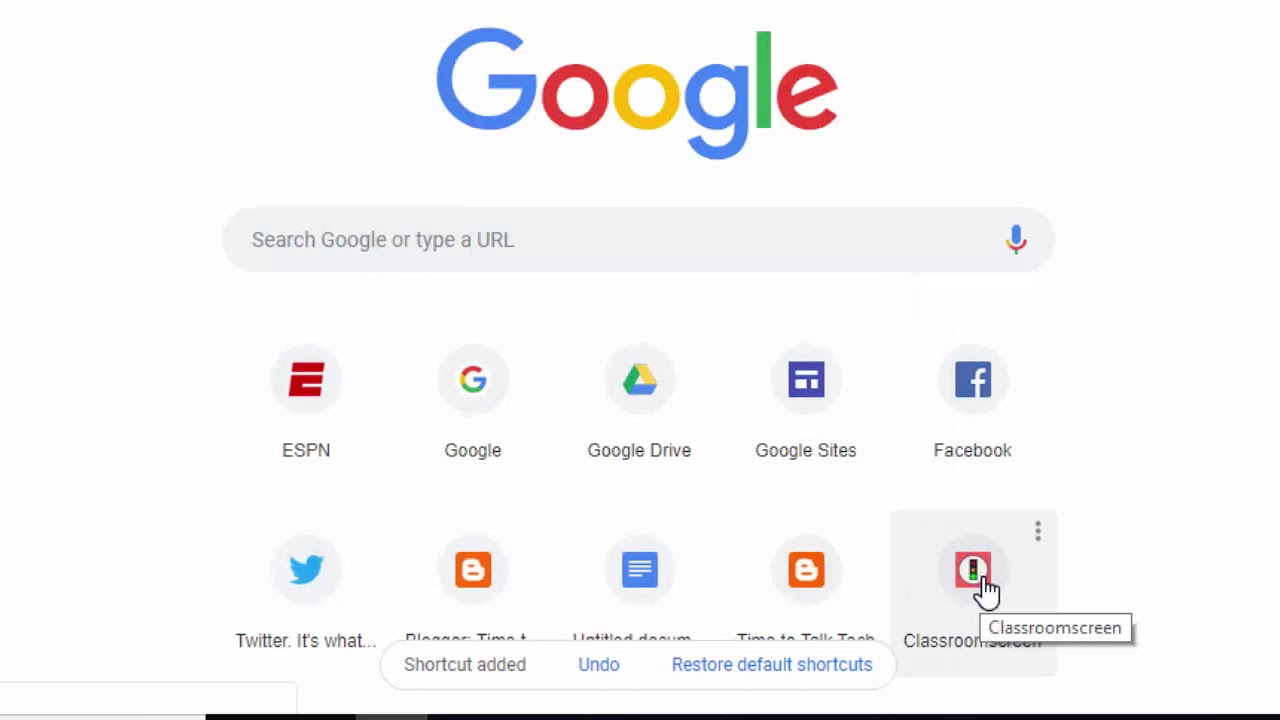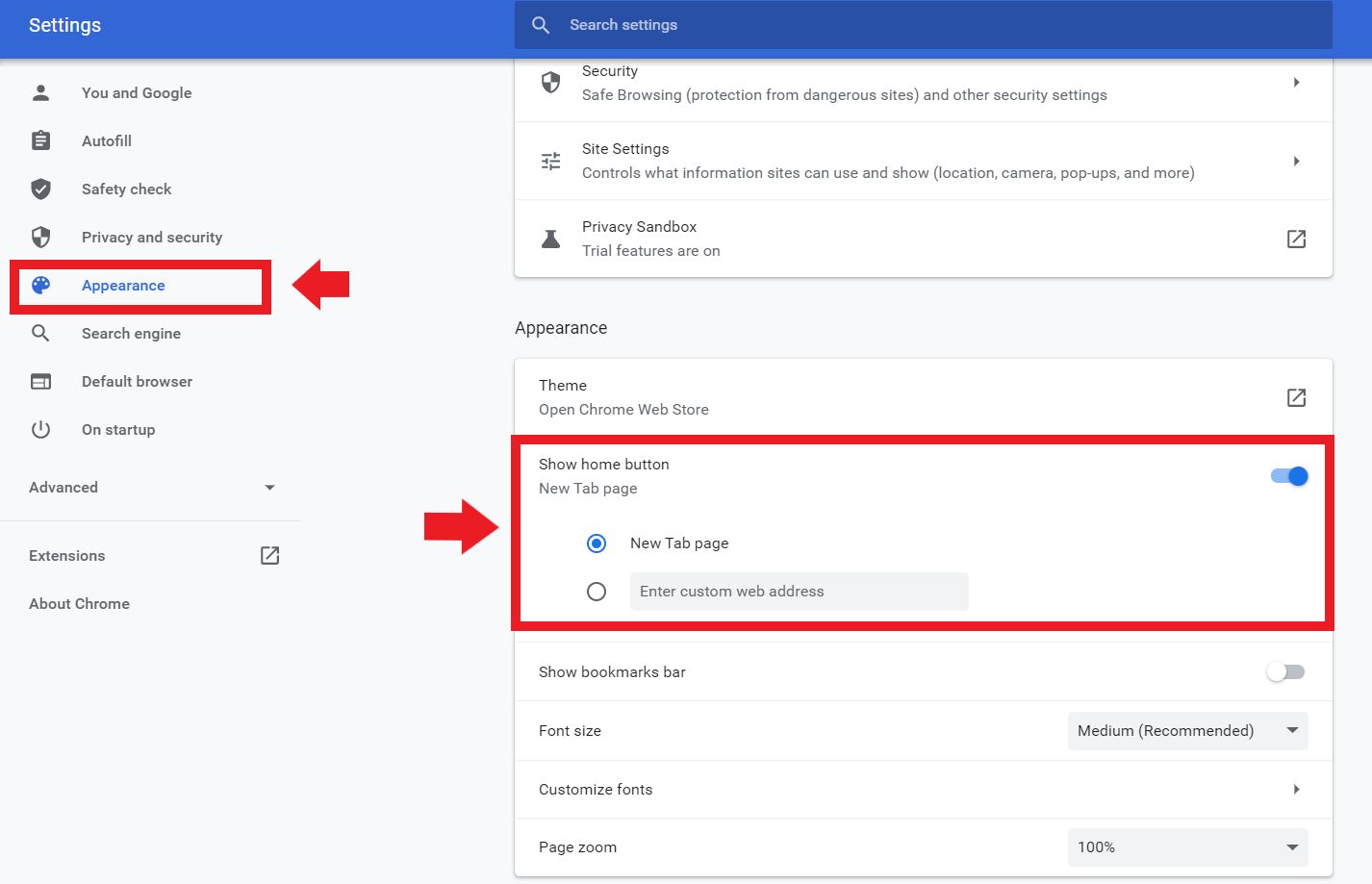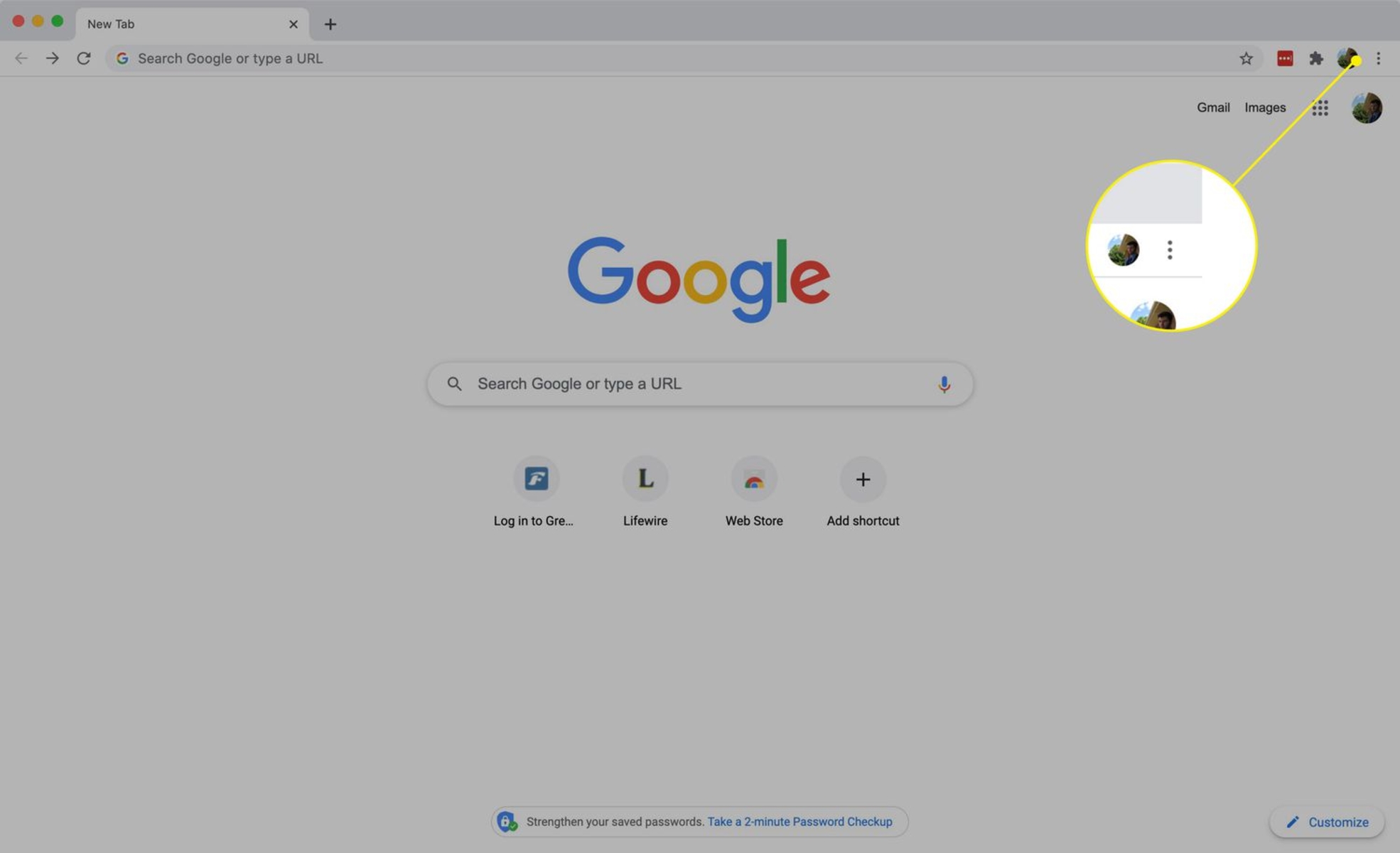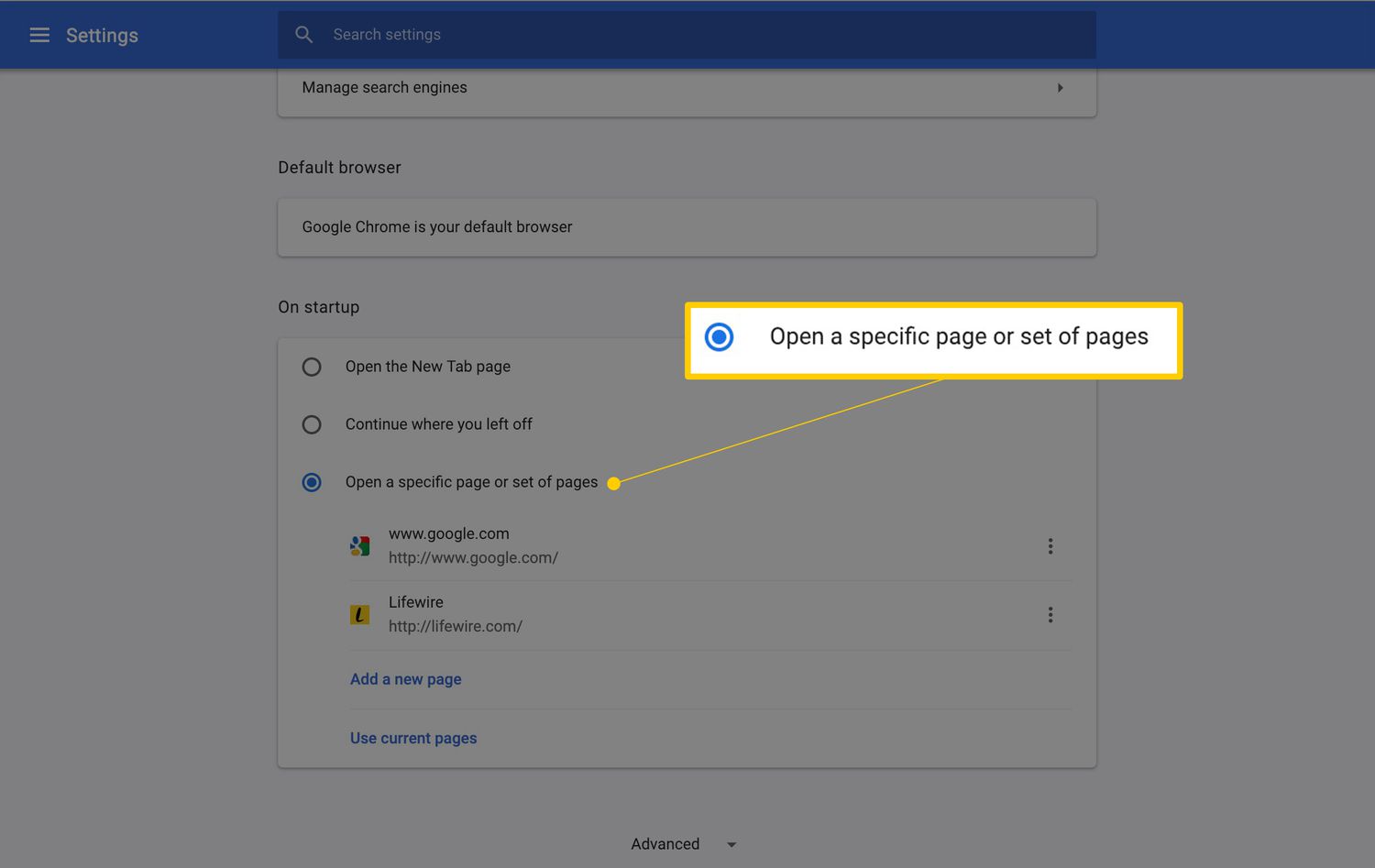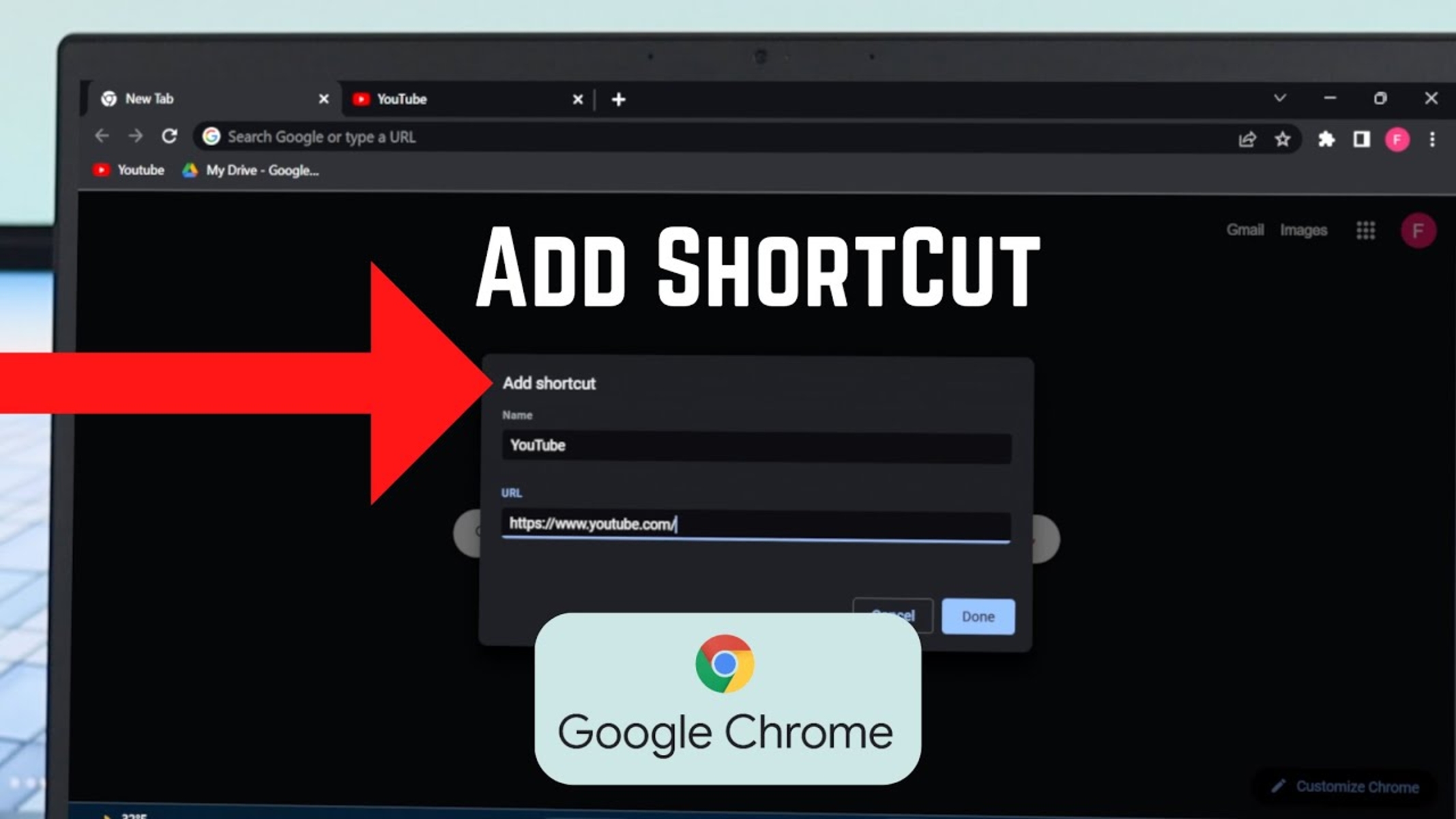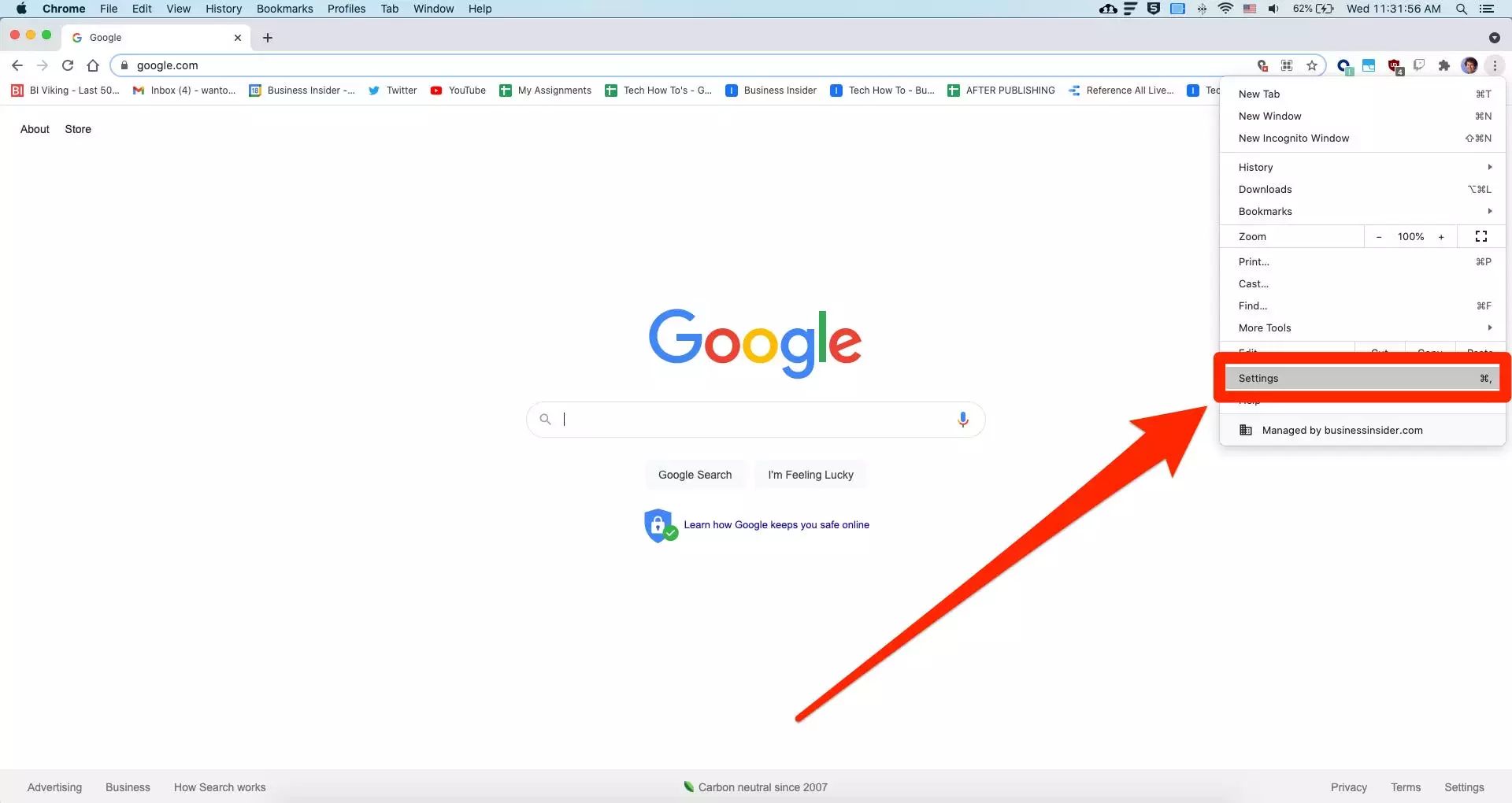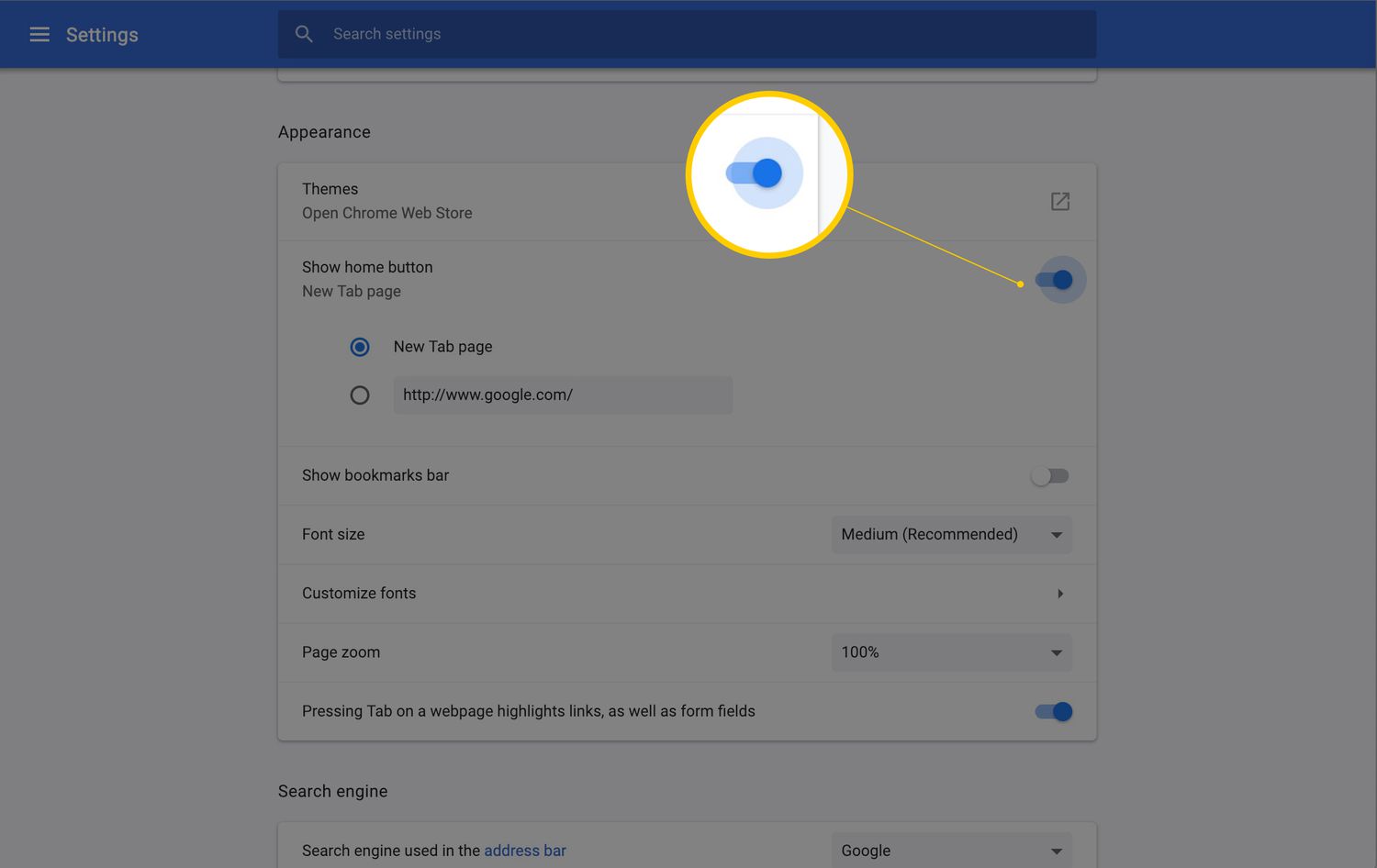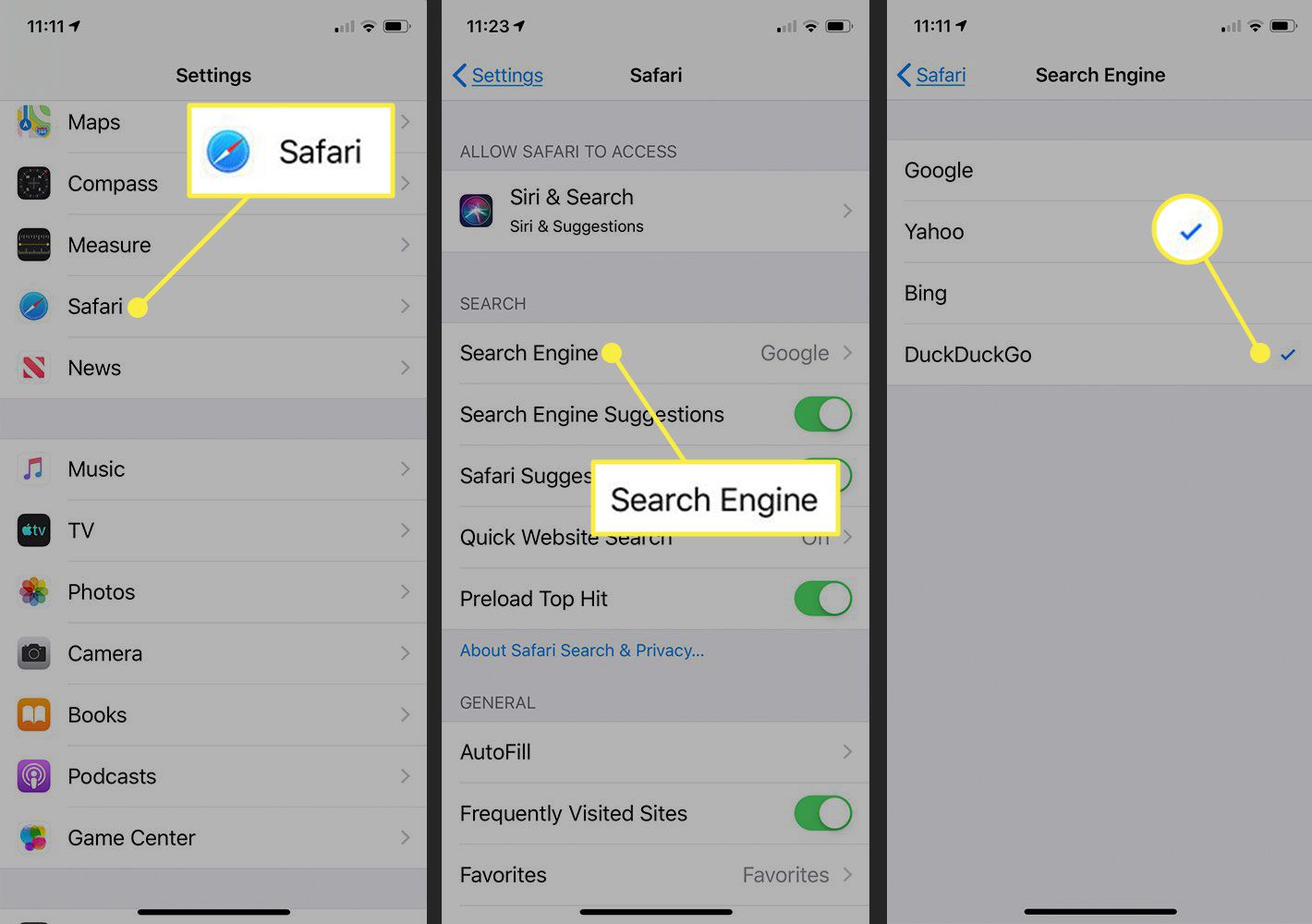Introduction
Google Chrome is one of the most popular web browsers, known for its speed, simplicity, and user-friendly interface. One of its convenient features is the ability to customize the homepage by adding specific webpages that you frequently visit. By doing so, you can streamline your browsing experience and access your favorite sites with just a click. Whether it's a news website, social media platform, or a productivity tool, adding webpages to your Google Chrome homepage can save you time and make your browsing sessions more efficient.
In this guide, we will walk you through the simple steps to add webpages to your Google Chrome homepage. You'll learn how to personalize your browsing experience and ensure that the sites you care about are readily accessible every time you open your browser. Whether you're a casual internet user or a seasoned professional, customizing your Chrome homepage can enhance your overall browsing experience and productivity.
So, let's dive in and explore how you can effortlessly set up your favorite webpages as the starting point of your browsing journey in Google Chrome.
Step 1: Open Google Chrome
To begin the process of adding webpages to your Google Chrome homepage, the first step is to open the Google Chrome browser on your computer or mobile device. You can easily launch Chrome by clicking on its icon in the taskbar, desktop, or applications folder. Alternatively, you can use the search function on your computer or mobile device to find and open the Chrome browser.
Once you have successfully opened Google Chrome, you will be greeted by the familiar interface that showcases the omnibox, which serves as both the address bar and search bar. The omnibox is where you can enter website URLs, search terms, or commands to navigate the web and access various features of the browser.
Upon launching Google Chrome, take a moment to ensure that you are connected to the internet, as adding webpages to your homepage requires an active internet connection. This ensures that you can seamlessly navigate to the desired webpages and set them as part of your personalized browsing experience.
Whether you are using Chrome on a Windows, Mac, or Linux computer, or on an Android or iOS mobile device, the process of opening the browser remains consistent. Google Chrome's cross-platform compatibility allows users to enjoy a cohesive browsing experience across different devices, making it convenient to access and manage their favorite webpages from anywhere.
With Google Chrome now open and ready for your input, you are all set to proceed to the next step and start customizing your homepage by adding specific webpages that matter to you. The following steps will guide you through the process of personalizing your Chrome homepage, ensuring that your most visited sites are just a click away every time you open the browser.
Now that Google Chrome is up and running, let's move on to the next step and delve into the process of adding webpages to your Chrome homepage, empowering you to tailor your browsing experience to your preferences and needs.
Step 2: Navigate to the Webpage
Once you have Google Chrome open, the next step is to navigate to the webpage that you want to add to your homepage. This could be any website that you frequently visit, such as a news site, social media platform, online shopping destination, or a productivity tool. By adding these webpages to your Chrome homepage, you can streamline your browsing experience and have quick access to the sites that matter most to you.
To navigate to the webpage, simply enter the URL of the website into the omnibox at the top of the Chrome browser window. The omnibox serves as both the address bar and search bar, allowing you to enter website URLs, search terms, or commands to navigate the web. As you start typing the URL or the name of the website, Chrome may provide suggestions based on your browsing history and bookmarks, making it easier to access the desired webpage.
Alternatively, if you have the webpage open in another tab or window, you can simply click on that tab to bring the webpage to the forefront. This is particularly convenient if you already have the webpage open and want to add it to your Chrome homepage without having to re-enter the URL.
Whether you are navigating to a familiar website or discovering a new one, Google Chrome's intuitive interface and efficient browsing capabilities make it easy to access the webpages you want to add to your homepage. As you navigate to the desired webpage, take a moment to ensure that it is the correct site that you wish to include as part of your personalized browsing experience.
By seamlessly navigating to the webpage of your choice, you are one step closer to enhancing your Chrome homepage with the sites that are important to you. With the webpage now accessible in your browser, you are ready to proceed to the next steps and complete the process of adding it to your Chrome homepage.
Now that you have successfully navigated to the webpage you want to add, let's move on to the subsequent steps and continue customizing your Chrome homepage to reflect your browsing preferences and habits.
Step 3: Click on the Three Dots
After navigating to the webpage you want to add to your Google Chrome homepage, the next step is to access the browser's settings to customize your homepage. To do this, you will need to click on the three dots located in the top-right corner of the Chrome window. These three dots, also known as the "More" or "Menu" icon, represent the Chrome menu, which houses a variety of options for customizing and managing your browsing experience.
Clicking on the three dots will reveal a dropdown menu that provides access to a range of features and settings within Google Chrome. This menu serves as a central hub for accessing tools, extensions, settings, and other essential functions that empower users to personalize their browsing environment.
Upon clicking the three dots, you will see a list of options displayed in the dropdown menu. These options include features such as "New tab," "New window," "Bookmarks," "History," "Downloads," "Zoom," "Settings," and more. The presence of these options reflects Chrome's commitment to providing users with a seamless and intuitive browsing experience, allowing them to effortlessly access various functionalities and settings.
The "More" icon is designed to be easily recognizable and accessible, ensuring that users can quickly navigate to the Chrome menu and explore the available options. Whether you are using Chrome on a desktop, laptop, or mobile device, the three dots remain a consistent element of the browser's interface, allowing for a unified experience across different platforms.
By clicking on the three dots, you are taking the crucial step of accessing the Chrome menu, which will enable you to proceed with customizing your homepage and adding the desired webpage to the list of sites that appear when you open a new tab. This simple yet pivotal action sets the stage for the subsequent steps in the process of personalizing your Chrome browsing experience.
With the Chrome menu now at your fingertips, you are poised to move forward and continue the process of customizing your Chrome homepage. The next steps will guide you through the remaining actions required to add the webpage to your homepage, ensuring that your most visited sites are readily accessible every time you open your browser.
Step 4: Select "Settings"
After clicking on the three dots in the top-right corner of the Google Chrome window, the next crucial step in customizing your Chrome homepage is to select "Settings" from the dropdown menu. The "Settings" option serves as the gateway to a wide array of customization and configuration options that empower users to tailor their browsing experience to their preferences and needs.
Upon clicking on "Settings," you will be directed to the Chrome Settings page, which presents a comprehensive range of features and controls for managing your browser. This page is designed to be user-friendly and intuitive, allowing users to navigate through different sections and options with ease.
The Chrome Settings page is organized into various categories, including "Appearance," "Search engine," "Privacy and security," "Sync and Google services," "Default browser," "Downloads," "Accessibility," and more. Each category contains specific settings and preferences that users can explore and modify to align with their browsing habits and requirements.
As you access the "Settings" page, take a moment to familiarize yourself with the layout and structure of the interface. This will enable you to navigate through the available options and locate the specific setting related to customizing your homepage.
The "Settings" page in Google Chrome serves as a centralized hub for managing all aspects of the browser, from basic preferences to advanced configurations. This reflects Chrome's commitment to providing users with a comprehensive and customizable browsing experience, ensuring that individuals can tailor the browser to suit their unique needs and preferences.
By selecting "Settings," you are taking a significant step towards personalizing your Chrome homepage and adding the webpage of your choice to the list of sites that appear when you open a new tab. This action sets the stage for the subsequent steps in the process of customizing your Chrome browsing experience, empowering you to streamline your access to frequently visited webpages.
With the "Settings" page now within reach, you are well-positioned to proceed with the remaining steps and complete the process of adding the desired webpage to your Chrome homepage. The following steps will guide you through the subsequent actions required to finalize the customization of your Chrome homepage, ensuring that your most visited sites are readily accessible every time you open your browser.
Step 5: Under "Appearance", Click on "Open a Specific Page or Set of Pages"
After accessing the "Settings" page in Google Chrome, the next pivotal step in customizing your Chrome homepage is to navigate to the "Appearance" section and click on "Open a Specific Page or Set of Pages." This action will enable you to define the webpages that you want to appear as part of your personalized browsing experience every time you open a new tab in Chrome.
Upon selecting "Open a Specific Page or Set of Pages," you will be presented with additional options to specify the pages that you want to set as your homepage. This feature allows you to tailor your browsing environment to your preferences, ensuring that the sites you frequently visit are easily accessible and readily available whenever you launch the Chrome browser.
The "Open a Specific Page or Set of Pages" option provides users with the flexibility to define their browsing starting point, whether it's a single webpage or a set of pages that reflect their diverse interests and needs. This level of customization empowers users to curate their browsing experience according to their individual habits and preferences, enhancing efficiency and convenience.
As you click on "Open a Specific Page or Set of Pages," take a moment to consider the webpages that you want to include as part of your Chrome homepage. Whether it's a news website that you visit daily, a social media platform that you frequent, an online shopping destination, or a productivity tool, this is your opportunity to streamline your browsing experience and ensure quick access to the sites that matter most to you.
The "Open a Specific Page or Set of Pages" feature aligns with Chrome's commitment to providing users with a personalized and intuitive browsing experience. By offering the ability to set specific webpages as the starting point of each browsing session, Chrome empowers users to tailor their digital environment to their unique needs and preferences.
By clicking on "Open a Specific Page or Set of Pages," you are taking a significant step towards defining your Chrome homepage and ensuring that it reflects your browsing habits and priorities. This action sets the stage for the subsequent steps in the process of customizing your Chrome browsing experience, empowering you to streamline your access to frequently visited webpages.
With the "Open a Specific Page or Set of Pages" feature now accessible, you are well-positioned to proceed with the remaining steps and complete the process of adding the desired webpage to your Chrome homepage. The following steps will guide you through the subsequent actions required to finalize the customization of your Chrome homepage, ensuring that your most visited sites are readily accessible every time you open your browser.
Step 6: Click on "Add a New Page"
After selecting "Open a Specific Page or Set of Pages" in the "Appearance" section of Google Chrome's settings, the next crucial step in customizing your Chrome homepage is to click on "Add a New Page." This action allows you to specify the URL of the webpage that you want to include as part of your personalized browsing experience.
Upon clicking "Add a New Page," a dialog box or input field will appear, prompting you to enter the URL of the webpage that you wish to set as part of your Chrome homepage. This presents an opportunity to seamlessly add a new webpage to the list of sites that will be readily accessible every time you open a new tab in Chrome.
The "Add a New Page" feature embodies Chrome's commitment to providing users with a streamlined and customizable browsing experience. By offering a straightforward method to add new webpages to the homepage, Chrome empowers users to curate their browsing environment according to their individual preferences and needs.
As you click on "Add a New Page," consider the webpage that you want to include as part of your Chrome homepage. Whether it's a news site that you visit daily, a social media platform that you frequent, an online shopping destination, or a productivity tool, this step allows you to enrich your browsing experience by ensuring quick access to the sites that matter most to you.
The ability to add a new webpage to your Chrome homepage reflects Chrome's user-centric approach, ensuring that individuals can effortlessly tailor their browsing environment to align with their unique habits and interests. This level of customization enhances efficiency and convenience, allowing users to define their digital starting point according to their preferences.
By clicking on "Add a New Page," you are taking a significant step towards enriching your Chrome homepage with the sites that are important to you. This action sets the stage for the subsequent steps in the process of customizing your Chrome browsing experience, empowering you to streamline your access to frequently visited webpages.
With the "Add a New Page" feature now accessible, you are well-positioned to proceed with the remaining steps and complete the process of adding the desired webpage to your Chrome homepage. The following steps will guide you through the subsequent actions required to finalize the customization of your Chrome homepage, ensuring that your most visited sites are readily accessible every time you open your browser.
Step 7: Enter the URL of the Webpage
After clicking on "Add a New Page," you will be prompted to enter the URL of the webpage that you want to set as part of your Google Chrome homepage. The URL serves as the unique address that directs your browser to the specific webpage, allowing you to access it seamlessly whenever you open a new tab in Chrome.
When entering the URL, it's essential to ensure accuracy and completeness to direct Chrome to the exact webpage you intend to add to your homepage. The URL typically begins with "http://" or "https://" followed by the domain name and specific page address. It's important to enter the complete and correct URL to ensure that Chrome accurately directs you to the desired webpage.
As you enter the URL, consider the webpage's significance to your browsing habits and preferences. Whether it's a news site that keeps you informed, a social media platform that connects you with friends and family, an online shopping destination, or a productivity tool that enhances your workflow, the URL represents the digital gateway to a site that holds value in your browsing experience.
The process of entering the URL underscores the user-centric nature of Chrome's customization features, allowing you to curate your browsing environment according to your unique needs and interests. By inputting the URL, you are taking an active step in defining your Chrome homepage and ensuring that it reflects the webpages that matter most to you.
As you complete the URL entry, take a moment to review the accuracy of the address to avoid any potential errors. Chrome's ability to recognize and direct you to the specified webpage hinges on the correctness of the URL, making it crucial to input the address with precision.
By entering the URL of the webpage, you are solidifying the inclusion of the site as part of your Chrome homepage, ensuring that it becomes readily accessible every time you open a new tab. This action represents the final step in the process of adding the desired webpage to your Chrome homepage, culminating in a personalized browsing experience that aligns with your unique preferences and habits.
Step 8: Click "Add"
After entering the URL of the webpage that you want to set as part of your Google Chrome homepage, the final step in the customization process is to click "Add." This action serves as the definitive confirmation to include the specified webpage as a prominent component of your Chrome browsing experience.
By clicking "Add," you are signaling to Chrome that the entered URL is a pivotal part of your browsing routine and deserves a dedicated place on your homepage. This simple yet significant action solidifies the integration of the selected webpage into the lineup of sites that will greet you every time you open a new tab in Chrome.
The act of clicking "Add" represents the culmination of the customization process, affirming your deliberate choice to prioritize quick access to the specified webpage. It signifies your proactive effort to tailor your browsing environment to align with your unique interests, needs, and habits, ensuring that the sites you value are just a click away.
As you click "Add," take a moment to acknowledge the impact of this action. You are actively shaping your digital space, ensuring that the webpages that hold significance in your daily routine are readily available and seamlessly integrated into your browsing journey. This level of personalization reflects Chrome's commitment to empowering users to define their browsing experience according to their individual preferences.
The "Add" button encapsulates the essence of user empowerment, allowing you to curate your Chrome homepage with precision and intention. It signifies your ability to shape your digital environment in a way that enhances efficiency, convenience, and overall browsing satisfaction.
With the click of "Add," you finalize the process of adding the desired webpage to your Chrome homepage, cementing its place as a central component of your browsing experience. This action marks the completion of the customization journey, ensuring that your most visited sites are readily accessible every time you open your browser, creating a personalized and efficient browsing environment tailored to your unique needs and preferences.
Conclusion
Congratulations! You have successfully personalized your Google Chrome homepage by adding specific webpages that hold significance in your browsing routine. By following the simple yet impactful steps outlined in this guide, you have empowered yourself to tailor your browsing experience to align with your unique preferences, needs, and habits.
Customizing your Chrome homepage offers a multitude of benefits, enhancing your efficiency, convenience, and overall satisfaction during browsing sessions. With your most visited sites readily accessible every time you open a new tab, you can streamline your access to news websites, social media platforms, online shopping destinations, productivity tools, and more. This level of personalization ensures that your digital starting point reflects the webpages that matter most to you, creating a seamless and intuitive browsing environment.
The process of adding webpages to your Chrome homepage underscores the user-centric nature of the browser, emphasizing its commitment to empowering users to define their browsing experience according to their individual preferences. Whether you are a casual internet user or a seasoned professional, the ability to curate your Chrome homepage reflects the browser's dedication to providing a personalized and efficient browsing environment for all users.
As you navigate the web with Google Chrome, you can take comfort in knowing that your favorite sites are just a click away, enhancing your productivity and enjoyment during browsing sessions. The convenience of having quick access to the webpages that hold value in your daily routine underscores the significance of customizing your Chrome homepage.
By adding webpages to your Chrome homepage, you have harnessed the power of personalization, ensuring that your browsing experience is tailored to your unique needs and preferences. This level of customization reflects the essence of user empowerment, allowing you to shape your digital environment in a way that enhances your overall browsing satisfaction.
As you continue to explore the capabilities of Google Chrome, remember that the ability to customize your browsing experience is a testament to the browser's commitment to providing a seamless, intuitive, and personalized platform for users worldwide. Embrace the power of customization and enjoy a browsing experience that is uniquely tailored to you.







